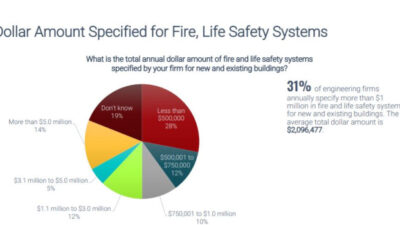Electricity usage in the United States is projected to grow more than twice as fast as committed resources over the next 10 years, the North American Electric Reliability Corp. (NERC) announced in its annual 2007 Long-Term Reliability Assessment. Unless additional resources are brought into service, some areas could fall below their target capacity margins within two or three years.
Electricity usage in the United States is projected to grow more than twice as fast as committed resources over the next 10 years, the North American Electric Reliability Corp. (NERC) announced in its annual 2007 Long-Term Reliability Assessment. Unless additional resources are brought into service, some areas could fall below their target capacity margins within two or three years. In parts of western Canada, demand is projected to outpace resource growth within about two years.
“We are at the stage where emergency situations are becoming more frequent,” said Rick Sergel, president and CEO of NERC. “Though some improvements have been made, we are requiring our aging grid to bear more and more strain, and are operating the system at or near its limits more often than ever before. As operating margins decrease, we are limiting our ability to manage unplanned events like equipment failures and extreme weather,” said Sergel.
Specific reliability findings detailed in the report include the following:
Wind, solar, and nuclear generation. Wind and solar are increasingly attractive generation resources, which provide benefits including fuel mix diversification and greenhouse gas emissions reductions. “Renewable resources are an important part of North America’s energy future, but reliably integrating them into the bulk power system has its challenges. Large-scale wind and solar generation resources are often remotely located and will require new transmission lines to deliver their power to population centers. Furthermore, we must pin down how much power these renewables can consistently produce during peak demand times so that they can be factored into reliability planning,” said Sergel.
Capacity margins. Peak demand for electricity in the United States is forecasted to increase by almost 18% (135,000 MW) in the next 10 years—enough energy to power more than 100 million homes on an average day. Meanwhile, committed resources to meet demand, including demand response programs, are projected to increase by only roughly 8.5% (77,000 MW). Counting uncommitted resources, total resources would increase by 123,000 MW or 12.7%. California, the Rocky Mountain states, New England, Texas, the Southwest and the Midwest could fall below their target capacity margins within two or three years if additional supply-side and demand-side resources are not brought into service.
Transmission. While several transmission projects were completed in the past year, and a number of planned projects have been accelerated, projected transmission additions still lag demand growth and new generation additions in most areas. Transmission miles are projected to increase by 8.8% (14,500 circuit miles) in the United States and 4.8% (2,250 circuit miles) in Canada over the next 10 years.
While this is significantly more planned transmission than projected in last year’s assessment, financing, pricing, cost allocation, siting, permitting, and building new transmission lines remain difficult.
Aging workforce. About 40% of senior electrical engineers and shift supervisors in the electricity industry are eligible to retire in 2009, according to a Hay Group study. This loss of expertise, exacerbated by the lack of new recruits entering the field, is one of the more severe challenges facing reliability today.
The 2007 Long-Term Reliability Assessment analyzes the adequacy of the North American bulk power system through 2016 and calls for actions to improve reliability.
The report is available at: ftp://www.nerc.com/pub/sys/all_updl/docs/pubs/LTRA2007.pdf .



